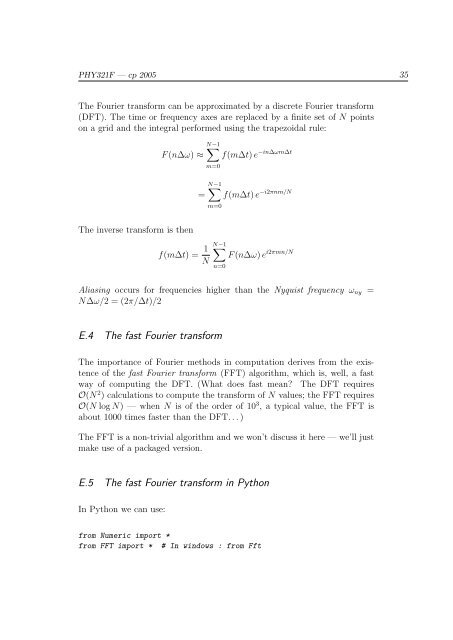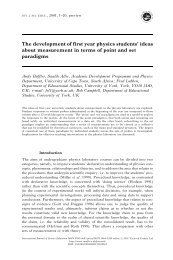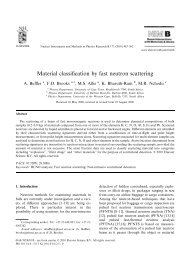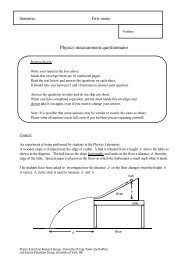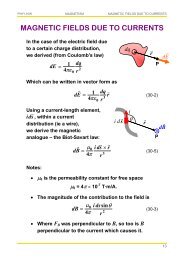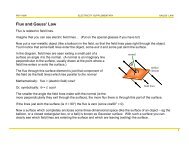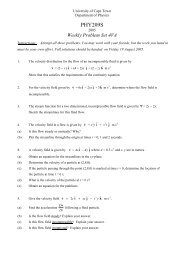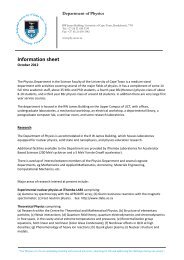Create successful ePaper yourself
Turn your PDF publications into a flip-book with our unique Google optimized e-Paper software.
PHY321F — cp 2005 35<br />
<strong>The</strong> Fourier transform can be approximated by a discrete Fourier transform<br />
(DFT). <strong>The</strong> time or frequency axes are replaced by a finite set of N points<br />
on a grid and the integral performed using the trapezoidal rule:<br />
F (n∆ω) ≈<br />
=<br />
N−1<br />
∑<br />
m=0<br />
N−1<br />
∑<br />
m=0<br />
f(m∆t) e −in∆ωm∆t<br />
f(m∆t) e −i2πnm/N<br />
<strong>The</strong> inverse transform is then<br />
f(m∆t) = 1 N<br />
N−1<br />
∑<br />
n=0<br />
F (n∆ω) e i2πmn/N<br />
Aliasing occurs for frequencies higher than the Nyquist frequency ω ny =<br />
N∆ω/2 = (2π/∆t)/2<br />
E.4 <strong>The</strong> fast Fourier transform<br />
<strong>The</strong> importance of Fourier methods in computation derives from the existence<br />
of the fast Fourier transform (FFT) algorithm, which is, well, a fast<br />
way of computing the DFT. (What does fast mean? <strong>The</strong> DFT requires<br />
O(N 2 ) calculations to compute the transform of N values; the FFT requires<br />
O(N log N) — when N is of the order of 10 3 , a typical value, the FFT is<br />
about 1000 times faster than the DFT. . . )<br />
<strong>The</strong> FFT is a non-trivial algorithm and we won’t discuss it here — we’ll just<br />
make use of a packaged version.<br />
E.5 <strong>The</strong> fast Fourier transform in Python<br />
In Python we can use:<br />
from Numeric import *<br />
from FFT import * # In windows : from Fft


